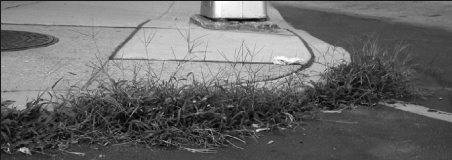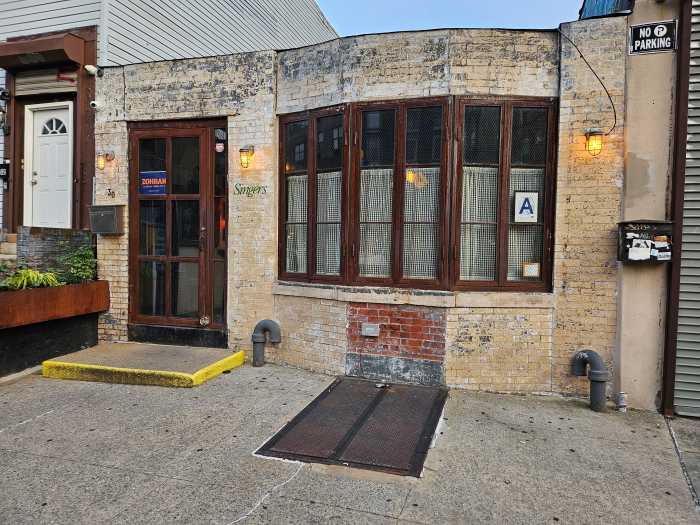By Christina Maile
Sex, sex, sex, rampant, fruiting, pushing, shoving, thrashing, tumbling, clasping, unclasping, bursting forth. Yes, it is one of the best annual events in the Village, when the streets of our neighborhood come alive with muscle and a voracious beauty burnished only by wind, sun and rain.
Traverse any street, from the strictly raised Jane to the loose-but-monitored 14th, from preppy Perry to work-hard Bleecker, we find them, the enemies of good design and moral order. Never ever the right plant in the right place, they boldly, promiscuously locate themselves outside of, inside of, on top of and all around our carefully tended streets. Called by many names — mulleins, lambsquarters, eleusine indica, mugwort, goosefoot, soldago — there is only one by which we know them best…weeds.
Webster’s defines them as an economically useless plant of wild, obnoxious growth whose presence excludes the growth of more valuable plants and/or contributes to the disfigurement of the place. How shortsighted. Consider, rather, that these incredible beings, these shimmering threads of stubborn desire are the city’s true connections to the fertile, chaotic bed of organic creativity lying just beneath us. The fabrication of the mind known as the urban fabric is, in fact, rent by a deeper fabrication. An earthy, prowling subconscious whose initial manifestation — a bumpy rosette of tough knotted stems — represents the continuing presence of nature’s irrational behavior in the midst of our carefully laid plans.
It is not surprising, then, that weeds are described as growing in “disturbed” areas. For we ourselves have been greatly disturbed, succumbing to a view of nature that is essentially meek, symmetrical, predictable. But weeds! How dare they? They invade our gridded neighborhoods. They unthread the brocade of our tidy streets and gardens. Hanging around at all hours of the night, on the corners, near the fire hydrants, breeding disorder, and bad example — rapscallions all of them. Oh, how bold.
Look at that one, the Eastern deadly nightshade, preening against the apartment building on Bank St. And don’t even mention yellow foxtail and what it’s doing at the construction site along Greenwich. Oh, such a celebration of survival and joy. Strutting their berries, wiggling their tiny flowers, their erect panicles indiscriminately casting seeds to the winds. They colonize every raveled edge, every in-between joint. Rooting themselves in. Uprooting your stuff out. It’s criminal, you say. Worse, indecent. Call the Sixth Precinct. Charge those weeds with disturbance of the status quo.
To “wear weeds” at one time referred to a fabric especially woven to indicate an occupation, a situation or a position. Now it speaks only of mourning. Yet the key meaning is still “weaving.” What we see in the homonymous weeds is not only a reminder of our woven interconnectedness to the earth, but an acknowledgement of their occupation as healers, spreaders of green and fulsome blankets over the beaten and broken remains of what is left of the natural world.
For ourselves, proletarians to the religion of the courteous and obedient landscape, servants to the myth of rational order, weeds are the warning against the catastrophe of perception which continues to generate the monoculture known as the manmade environment. If we do not recognize the irreplaceable beauty of their healing presence, if we fail to heed their wild and artistic, passionate and rebellious call, a sterile and nameless sadness will soon envelope our wounded and sterile souls.
Maile is a landscape architect and artist.





































